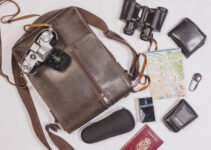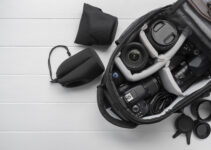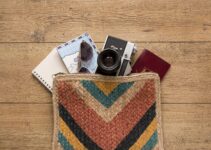Can you bring your camera in your personal bag? It’s a question that sparks curiosity, especially for travelers and photography enthusiasts eager to capture every moment.
The answer is yes, you can bring your camera in your personal bag.
Airlines generally allow cameras in carry-on bags, but it’s essential to check specific guidelines and restrictions, especially regarding batteries and equipment size.
But these guidelines can vary, and some airlines may have stricter policies.
To delve deeper into this topic and ensure a seamless travel experience with your camera gear, let’s explore expert insights and practical tips in our detailed guide.
Here how to make a camera bag for DSLR.
Can I put my camera in my bag?
Certainly! Putting your camera in your bag is a common and practical way to transport it safely.
A good camera bag provides protection from dust, moisture, and accidental bumps or drops. It also keeps your camera organized, with compartments for lenses, batteries, and other accessories.
When placing your camera in the bag, ensure it’s turned off, and if possible, remove the lens to save space and prevent damage.

Choose a bag that fits your camera snugly but allows for easy access. Padding is crucial to cushion your gear, especially during travel or outdoor shoots.
Some bags even have weather-resistant materials to shield your equipment from rain or snow.
Remember to secure zippers and closures properly to avoid any mishaps. With a well-designed camera bag, you can carry your gear confidently, knowing it’s protected and ready for your next photographic adventure.
Does a camera count as hand luggage?
Where should I pack my camera when flying?
Do cameras have to come out of bag at TSA?
Can i bring my camera in my personal bag?
Can you hold a camera in your hand on the airpot?
Where to pack a camera bag while travelling on a plane?
9 places to pack your camera bag while travelling on a plane
Related faq’s
Can I bring my camera in my personal bag on a plane?
Yes, you can generally bring your camera in your personal bag when traveling on a plane. Cameras are considered personal items or carry-on baggage, but it’s essential to check the airline’s specific policies regarding carry-on items and dimensions.
Are there any restrictions on the type of camera I can bring in my personal bag?
Most airlines allow both compact cameras like point-and-shoots and larger cameras such as DSLRs or mirrorless cameras in personal bags.
However, if you’re carrying larger equipment, it’s advisable to check with the airline for any special instructions or size limitations.
Do I need to remove my camera from my personal bag during security screening?
In most cases, you don’t need to remove your camera from your personal bag during airport security screening. Cameras can typically remain in your bag, but be prepared to follow any instructions given by security officers if additional screening is required.
Should I pack my camera securely in my personal bag?
Yes, it’s important to pack your camera securely in your personal bag to prevent damage during travel. Use a padded camera bag or case to protect your camera and accessories from bumps or jostling.
Can I bring multiple cameras or lenses in my personal bag?
You can bring multiple cameras and lenses in your personal bag, depending on the size and weight restrictions set by the airline.
Ensure that your bag is within the allowed dimensions and weight limits to avoid any issues during boarding or security checks.
Conclusion:
In conclusion, bringing your camera in your personal bag while traveling is generally allowed and convenient. Most airlines consider cameras as personal items or part of carry-on baggage.
However, it’s crucial to be aware of any size or weight restrictions imposed by the airline.
Packing your camera securely in a padded bag ensures its safety during transit.
Remember to check specific policies and guidelines from the airline to ensure a smooth and hassle-free travel experience with your camera in your personal bag.








